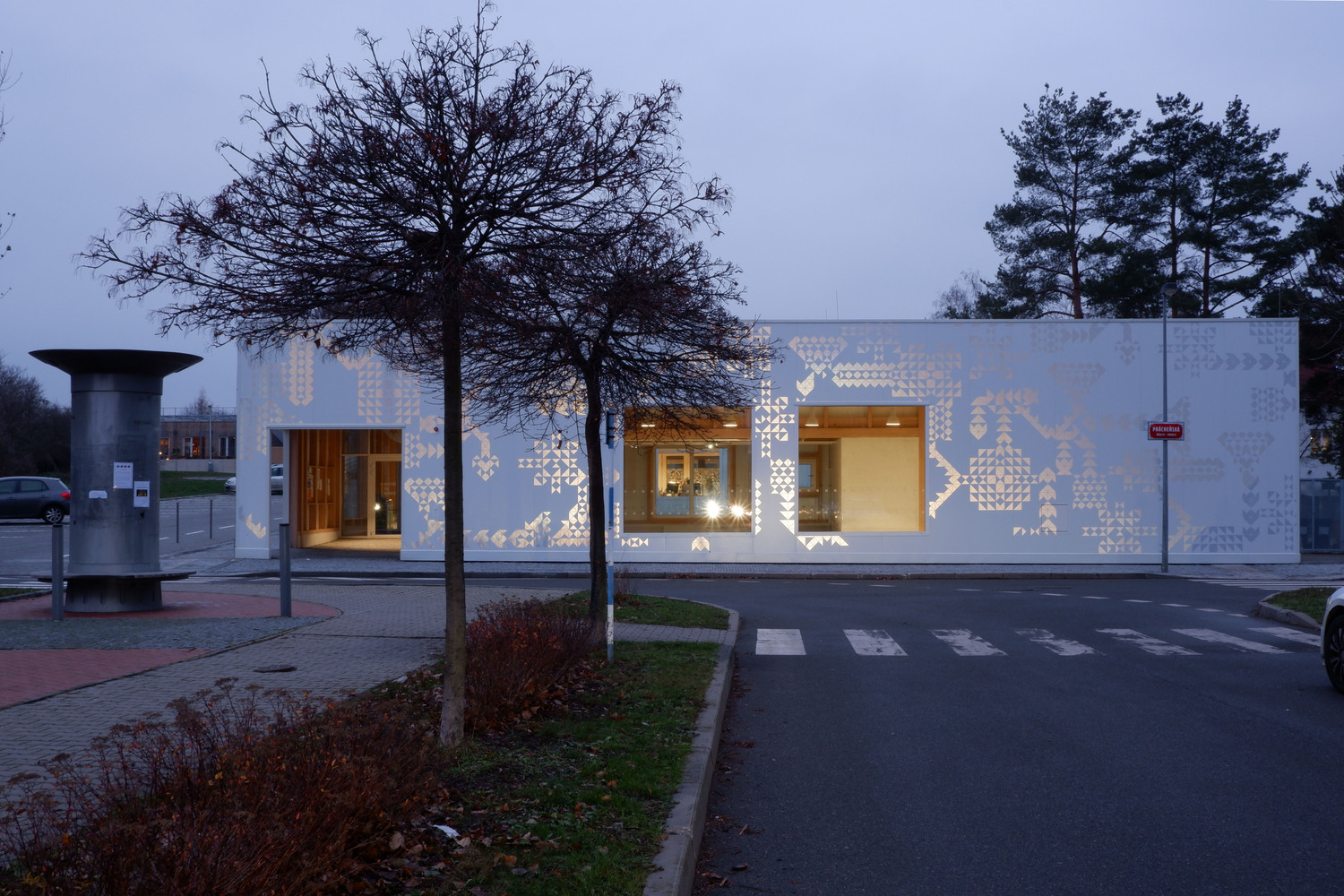Arumjigi Building Kim Jongkyu + m.a.r.u.network
2014-09-09 01:00
© Kyungsub Shin
c KyungsubShin
.jpg)

架构师提供的文本描述。Arumjigi的意思是“保护和照顾我们美丽的文化的人”。最近在京博宫(韩国王宫)附近建成的这座建筑是Arumjigi文化基伯斯基金会的新房子。人们期望它是一个文化的地方,在那里人们可以在整个文化节目中体验到韩国的美和情感,也可以体验到空间本身。
Text description provided by the architects. Arumjigi means ‘People who preserve and take care of our beautiful culture’. And the building recently completed near Gyeongbokgung(Korean royal palace) is new house for Arumjigi Culture Keepers Foundation. People expect it to be a cultural place where people can experience Korean beauty and sentiment throughout cultural programs and also spaces itself.
© Kyungsub Shin
c KyungsubShin
.jpg)

从一开始,它就要求在新建筑内有一座由工匠大师建造的韩国传统房屋(韩佳)。它是Arumjigi的象征,也是传统建筑与现代建筑之间关系的关键问题。
From the beginning it is required to have a Korean traditional house (Han-ok) built by master craft man within new building. It is a symbol of Arumjigi and also critical issue of relationship between traditional and modern architecture to be worked out to client as well as architect.
© Kyungsub Shin
c KyungsubShin
.jpg)

空间组织的策略是理解小空间中各种程序与空间的关系,建立现代建筑与传统建筑的关系。首先,韩-ok自然是朝南的。考虑到汉诺克的社交能力和土地,它应该在一楼,但它只留下很小的空间,为其他节目。因此,韩佳坐在一个新的地形图上(一楼),为下面的文化节目提供了足够的空间。在一楼,社交活动的房间围绕着马当(传统庭院),在中间与韩佳建立自然的关系。马当将是现代建筑与传统建筑相遇的好地方。最后,将写字楼放置在顶上,向南偏低,以保持马当市的空间质量。总体规划的目的是组织得当,传统的房屋和现代建筑创造了新的关系,同时又不丧失每个项目的基本质量。
The strategy of space organization is to understand relationship between various programs and space in a small land and to establish relationship between modern and traditional architecture. Firstly Han-ok is placed facing southward naturally. Considering the sociability of Han-ok and the land, it should be on ground floor but it will leave just little rooms for other programs. Therefore Han-ok is sat on a new topography (first floor) which gives enough rooms for cultural programs below. On first floor rooms for social program take place around Ma-dang (traditional courtyard) to create natural relationship with Han-ok in between. Ma-dang will be where modern and traditional architecture is encountered nicely. Finally office rooms are placed on top leaving southward lower to keep spatial quality of Ma-dang with full daylight. Overall programs are organized properly for its purpose and traditional house and modern building creates new relationship without losing essential quality of each.
© Kyungsub Shin
c KyungsubShin
.jpg)

材料的使用也被认为是传递空间之间的关系,也是为了使用具有原始属性的材料,如天然木材、石头、混凝土和玻璃。建筑物下部随着新的地形暴露,混凝土和中间部分被天然木材包围,与韩佳相匹配。前面的建筑顶部被半透明的玻璃包围着,被模糊到天空中。地下室是石墙,所以背面看起来更自然,顶部是韩佳。空间与各种用途的物质结合,使建筑具有可持续性和美观性。
Material use is also considered to deliver relationship between spaces and also aim to use materials with feeling of original properties like natural timber, stone, concrete and glass. Lower part of building as new topography is exposed concrete and middle part is enclosed by natural timber to be matched with Han-ok. Top part of building at front is enclosed by translucent glass to be blurred into sky. Basement is stone wall so it looks more natural at back with Han-ok on top. Material combination of spaces with each purpose makes building sustainable and aesthetic
.jpg)

空间组织的过程使房间之间通过不同的室外空间建立了良好的联系。中央庭院(马当镇)由道路直接连接,小花园,下院与遗址出土的文物石料,木甲板周围等。这可以改善人们在这里工作的大部分时间的环境生活方式。
The process of space organization results nice connection between rooms through various outdoor spaces. Central courtyard (Ma-dang) is connected from road directly, small garden, lower yard with heritage stone excavated from the site, wooden deck looking surrounding etc. This can enhance lifestyle environmentally for people working most of day here.
© Kyungsub Shin
c KyungsubShin
.jpg)



.jpg)

.jpg)

.jpg)

.jpg)

.jpg)

.jpg)

.jpg)





.jpg)

.jpg)





.jpg)

.jpg)

.jpg)



.jpg)

.jpg)

.jpg)

.jpg)























.jpg)

.jpg)

.jpg)

.jpg)

.jpg)

Architects Kim Jongkyu, m.a.r.u.network
Location 35-32 Tongui-dong, Jongno-gu, Seoul, South Korea
Category Cultural Center
Architect in Charge Kim Jongkyu , Choi Jonghoon
Design Team Jang Byul, Choi Sunwoo, Jung Youngju, Jung Eunju
Area 1190.0 sqm
Project Year 2013
Photographs Kyungsub Shin, Jonathan Lovekin
























